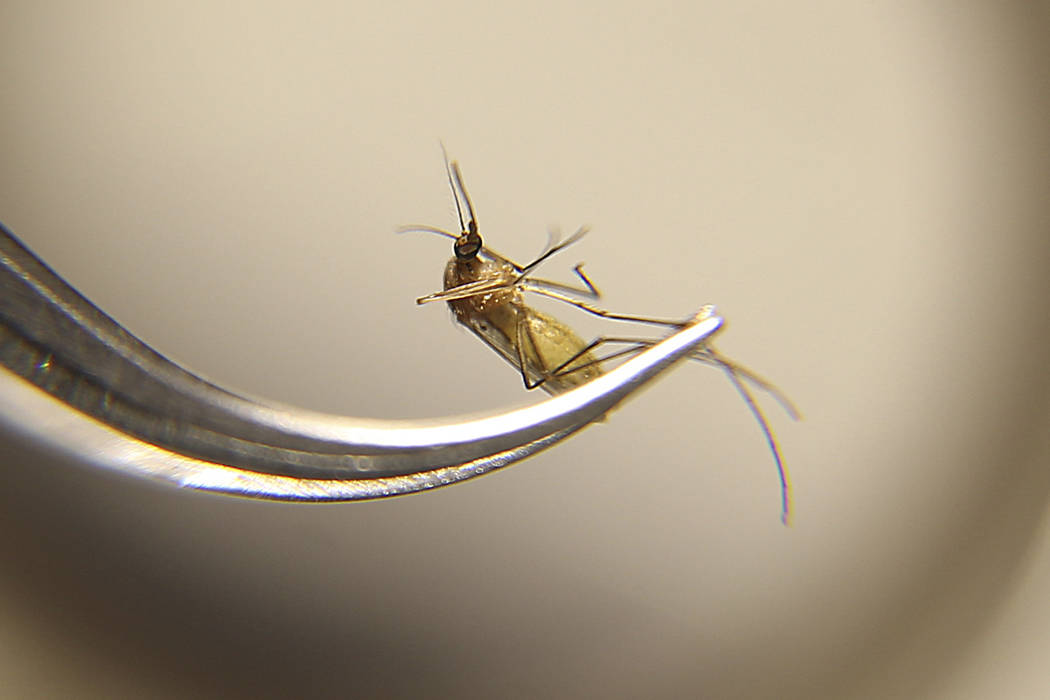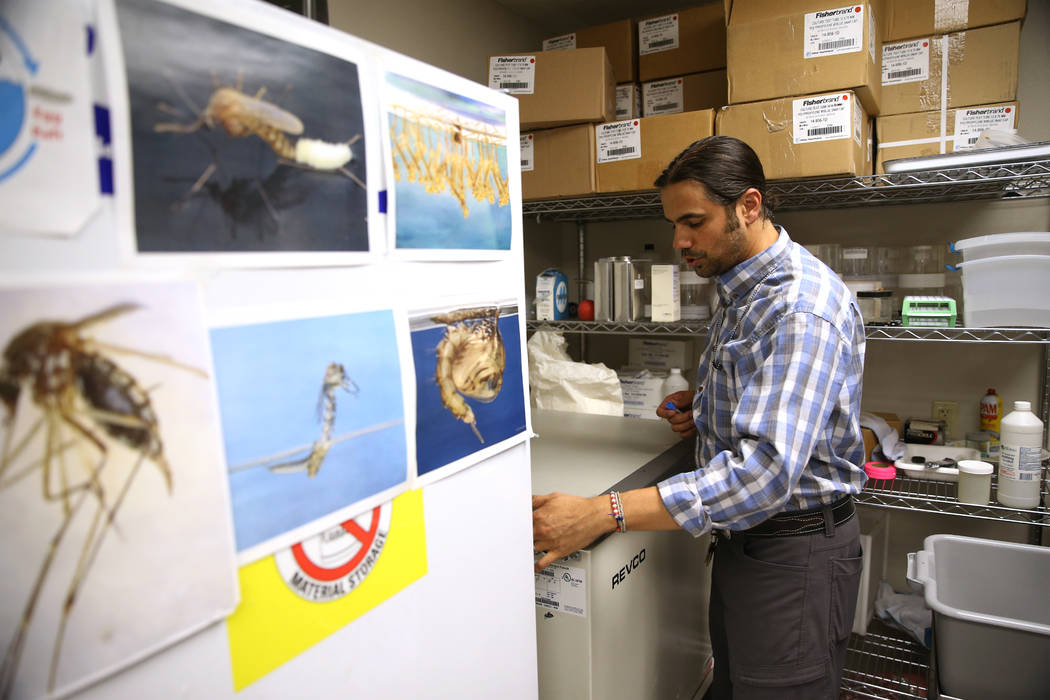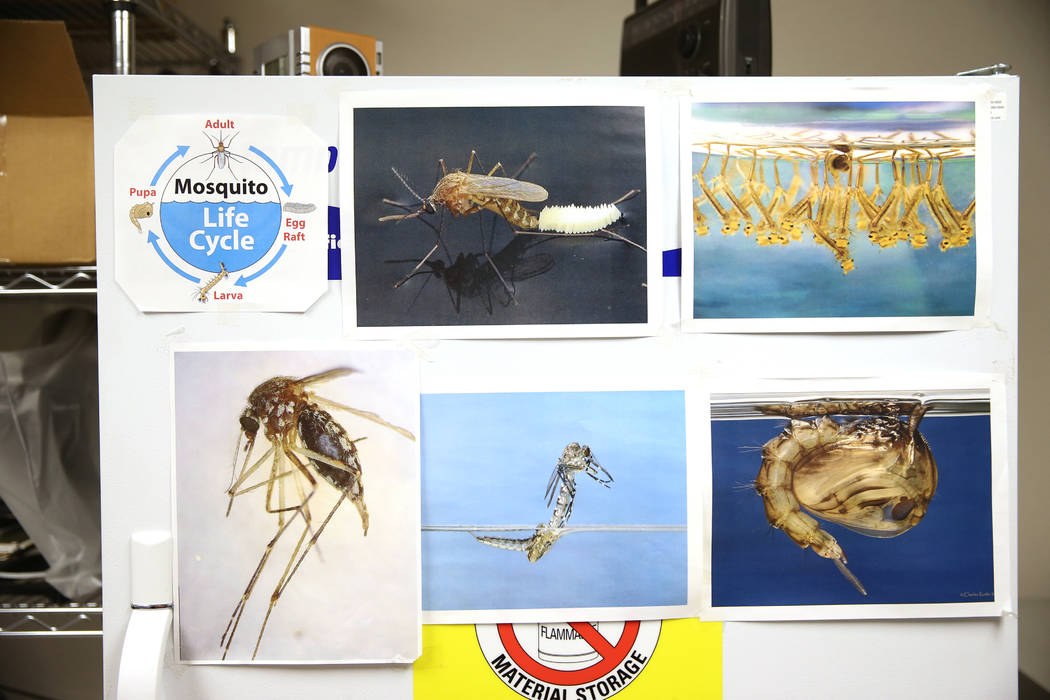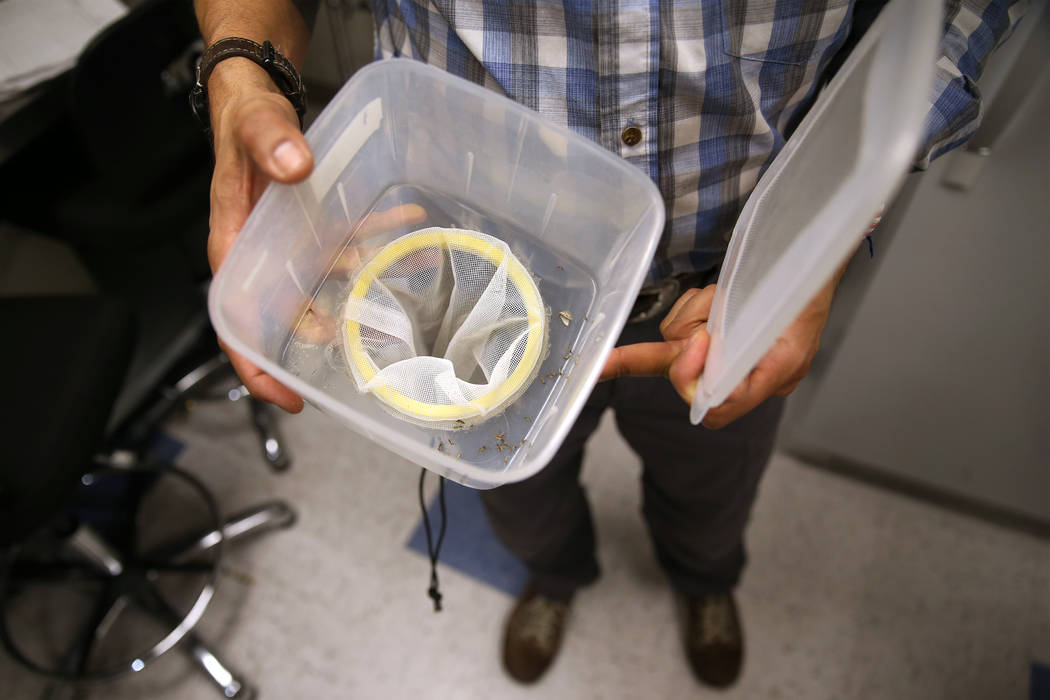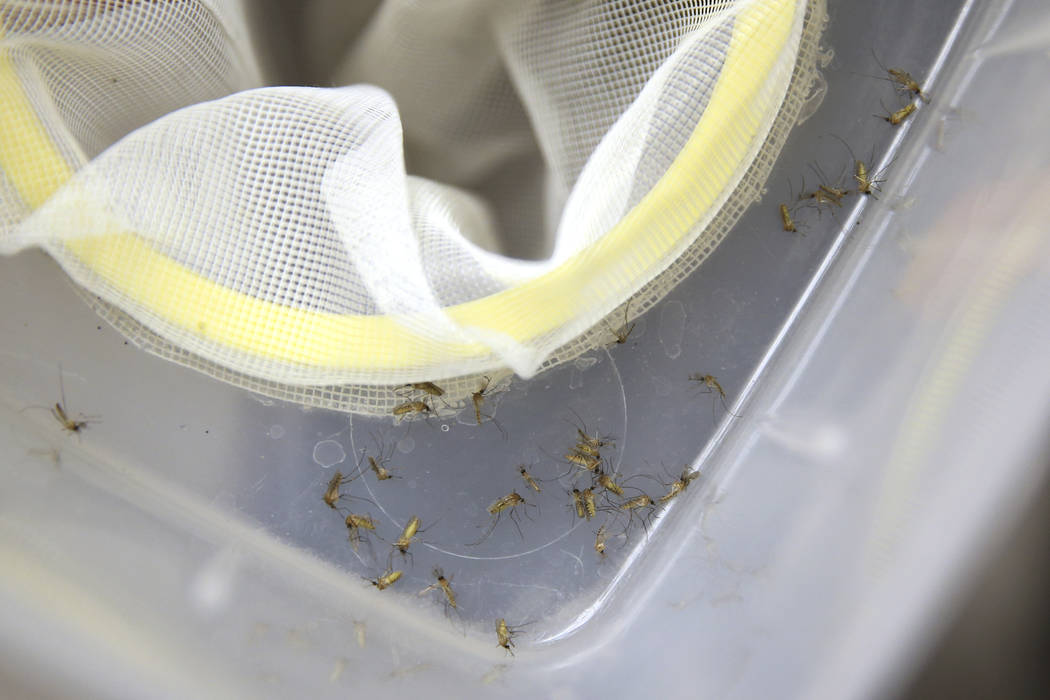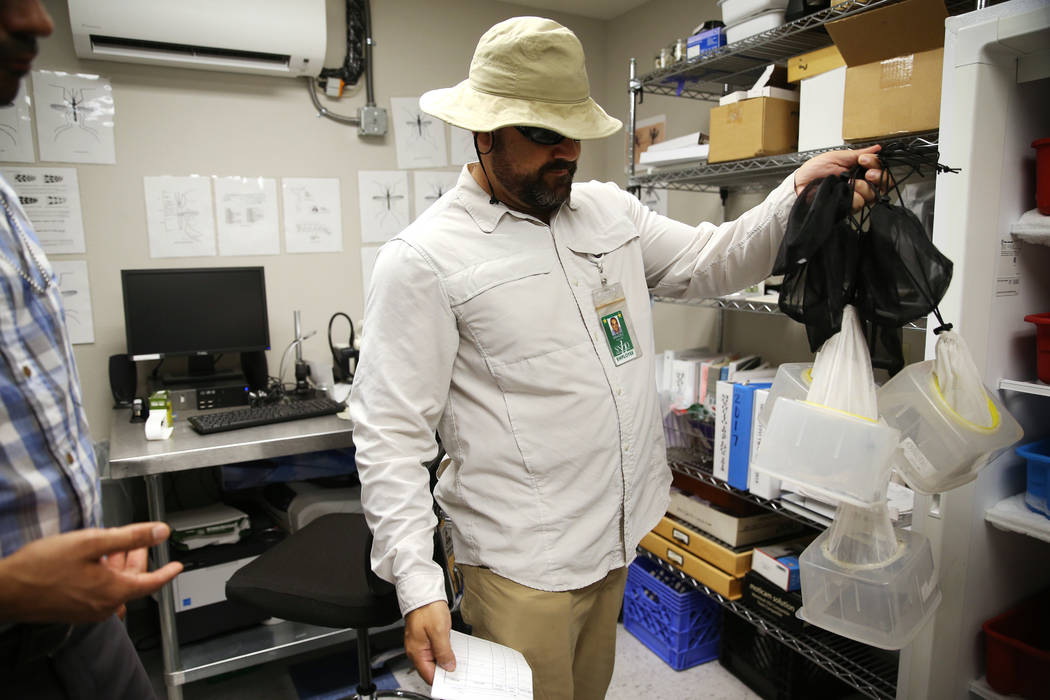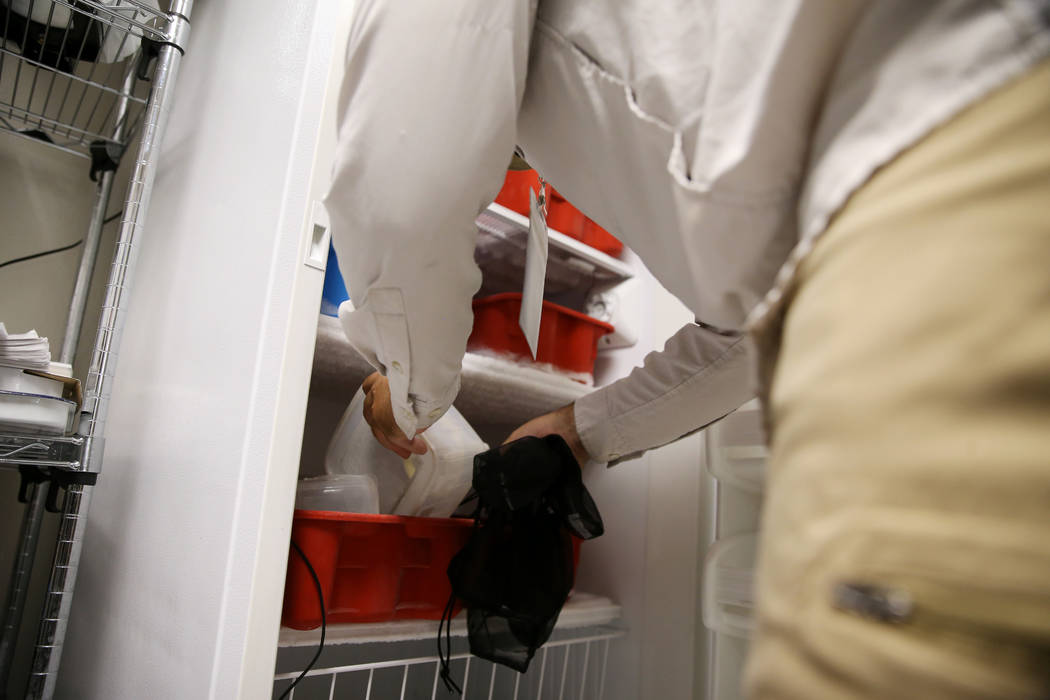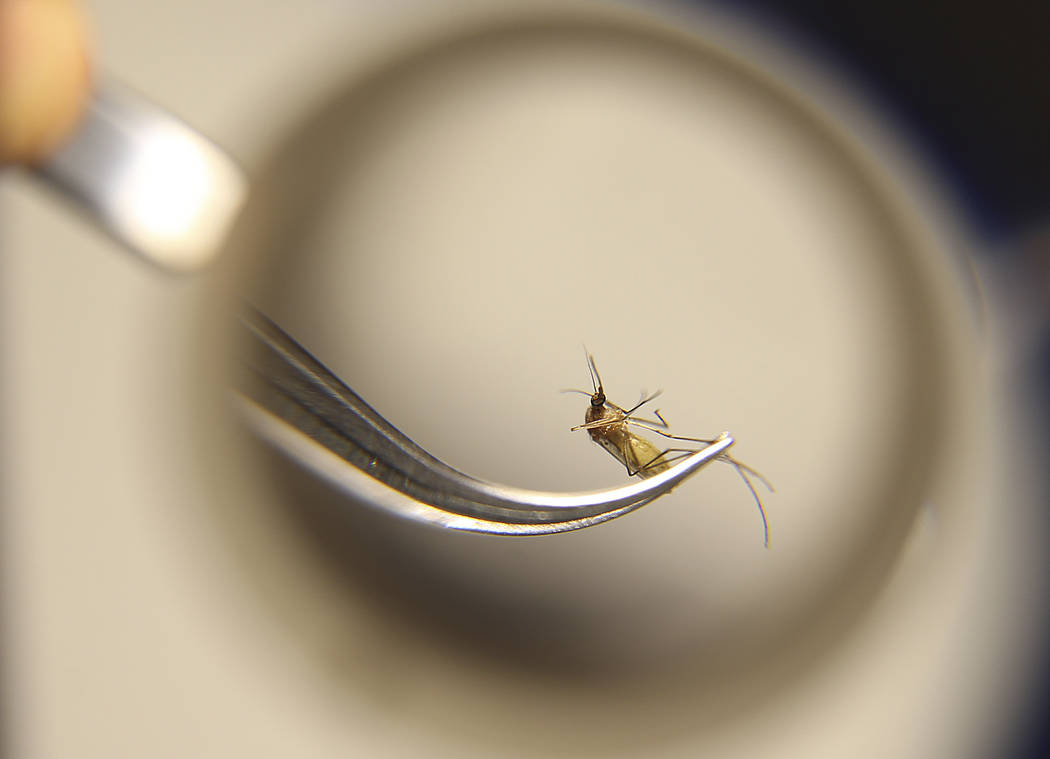Southern Nevada part of national West Nile virus ‘hot zone’
Southern Nevada, Southern California and central Arizona are the nation’s “hot zone” for West Nile virus, reporting the highest number of cases of the potentially fatal mosquito-borne disease in the U.S.
Medical researchers and public health authorities aren’t sure what’s behind the Southwestern surge of the virus but suspect a confluence of environmental factors, including mild winter weather patterns and possibly even the massive influx of grasshoppers, might play a role.
The Southern Nevada Health District reported Aug. 22 that there had been 28 cases of West Nile virus this year in Clark County — the highest number since the virus was first detected here in 2004 — and declared an outbreak. Arizona leads the nation with 126 cases, followed by Nevada and California, which as of last week had similar caseloads, according to the most recent figures from the Centers for Disease Control in Atlanta.
People contract West Nile virus from the bite of an infected mosquito. Mosquitos become infected by biting infected birds, which can carry the virus long distances as they migrate. The disease isn’t spread person to person or from other animals to people.
“Right now, central Arizona, Southern California and Southern Nevada seem to be the country’s hot zone for West Nile virus,” said David Engelthaler, an Arizona-based researcher studying the outbreak.
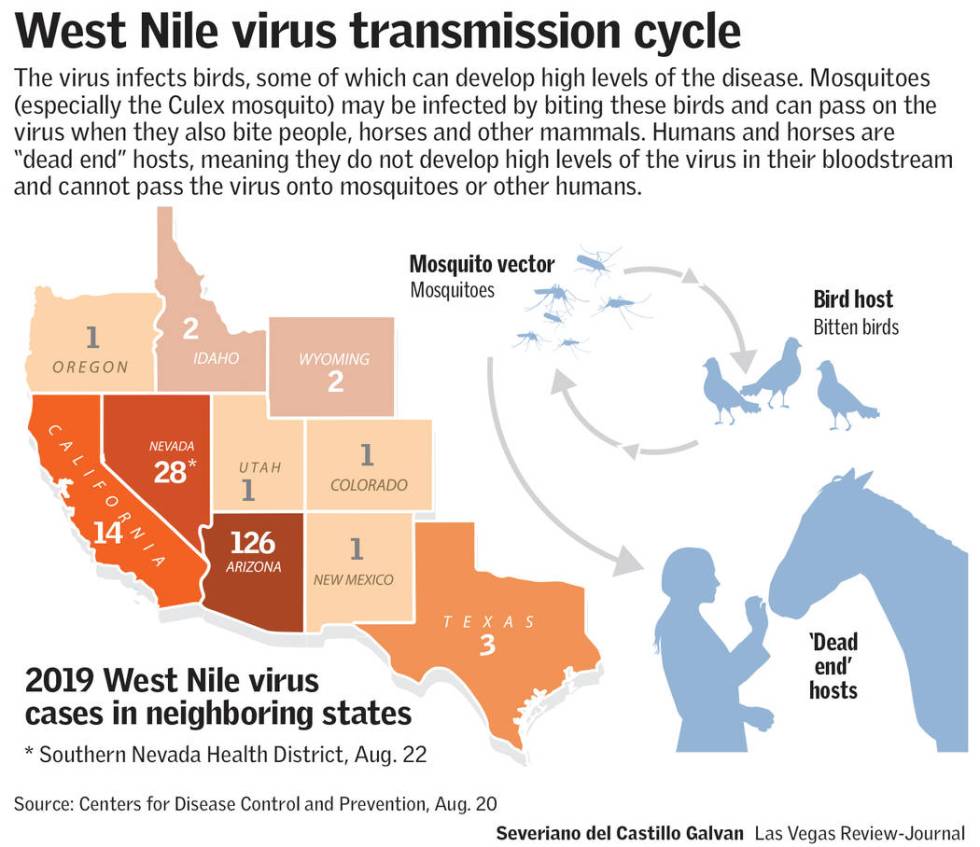
Weather’s role
West Nile affects different parts of the country in different ways in different years. Changes in weather patterns drive fluctuations in mosquito-borne diseases, which are closely tied to the environment, said Engelthaler, an associate professor with the Translational Genomics Research Institute (TGen), an Arizona-based nonprofit medical research institute. Northern Arizona University and TGen are conducting research with public health agencies on how West Nile virus is moving around the Southwest.
It’s likely that a wetter winter bolstered many parts of the ecosystem, including plants, “which increased seeds, which increased bird abundance,” Engelthaler said. Also, the mild, wet weather increased breeding locations for mosquitoes in Arizona’s Maricopa County, enabling more of the insects to survive the winter.
“With year-round mosquito populations and likely increased bird abundance, the amount of virus cycling in the natural environment can greatly increase, leading to more opportunity to infect more birds and humans,” Engelthaler said.
More infected birds then carry the virus to a larger area, exposing more mosquitoes, he said. That in turn “increases the size of the hot zone, essentially increasing the geographic range of the virus,” he said.
Devin Raman, senior disease investigator for the Southern Nevada Health District, said that the massive influx of grasshoppers this summer could have contributed to the cycle of the virus by drawing more migratory birds to Clark County. But she emphasized that this is supposition.
To shed more light on the virus, a collaboration between the Southern Nevada Health District and the Arizona research team was solidified on Wednesday, said Crystal Hepp, an assistant professor at Northern Arizona University, who is leading the research project. The project is funded by grants from the Arizona Biomedical Research Center, the Arizona Technology Research and Initiative Fund, and the Pacific Southwest Regional Center of Excellence for Vector-Borne Diseases.
As part of its research, the team now will look at whether West Nile virus-infected mosquitoes in Clark County might have originated in central Arizona. That is done by sequencing mosquito genomes and comparing them with those in a database.
“We’re trying to move forward on understanding how long the virus has been in Nevada, where it came from, and how it’s moving within Nevada, in terms of identifying areas of higher versus lower risk,” Hepp said.
‘A permanent resident’
The research team already has tracked a strain of West Nile virus found in Maricopa County that traveled to southern Utah, the Coachella Valley in Southern California and Yuma County in southwestern Arizona.
“It seems West Nile virus does well in the Southwest United States,” Hepp said.
She predicts, though, that there might be fewer cases next year, as large populations of birds will have gained immunity this year, which means they won’t be spreading the virus to mosquitoes.
Still, she and other authorities emphasized that the virus is here to stay in the Southwest.
“West Nile is certainly now a permanent resident in the region, and we, the human residents of the Southwest, need to support continued research and surveillance on an annual basis to improve public health response and limit the impact on human and animal health,” Engelthaler said.
Of the 28 cases of West Nile virus reported this year in Clark County, 17 have been a severe form of the illness that affects the central nervous system and can be fatal or lead to permanent disability.
The health district has urged Southern Nevadans to protect themselves against mosquito bites by wearing Environmental Protection Agency-registered insect repellents. It also recommends wearing outdoors light-colored long-sleeved shirts and pants.
The district encourages residents to eliminate mosquito-breeding sources, including noncirculating ponds, “green” swimming pools and accumulated sprinkler runoff, which support mosquito breeding. More tips can be found on the mosquito breeding prevention page on the health district’s website.
“I hear over and over again from cases that are completely shocked that this (a mosquito-borne virus) is what’s making them sick,” Raman said. “Yes, we have mosquitoes, and our mosquitoes are carrying this virus. And we need to protect ourselves.”
Contact Mary Hynes at mhynes@reviewjournal.com or 702-383-0336. Follow @MaryHynes1 on Twitter.



